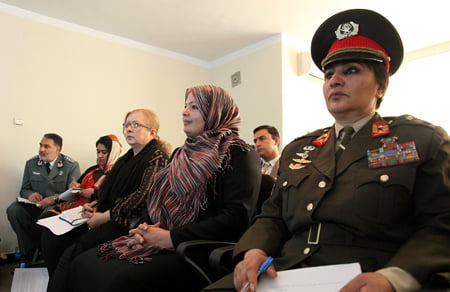KABUL, Afghanistan – Women in Herat province, Afghanistan are setting themselves on fire to escape lives of unbearable depression and abuse. The New York Times’ recent article on the phenomenon is a disturbing glimpse into the lives of women who saw cooking fuel and matches as the only means to freedom and a reminder of the dangerous days ahead for Afghan women’s rights activists.
Farzana, one of the women interviewed for the article, was forcibly married at age twelve in a bride exchange. At seventeen, after five years of physical and psychological abuse at the hands of her husband and inlaws, she doused herself in fuel and struck a match.
The availability of cooking supplies in even poor households and the influence of Iran, which has a tradition of self-immolation suicide and where many Afghan women lived as refugees, are cited as explanations for why women in the western border provinces choose this especially slow and painful way to kill themselves.
While self-immolation is not a new phenomenon in Afghanistan or the region, more cases are being reported each year by hospitals and organizations that try to save, and then protect, burned women.
But is self-immolation really increasing? It’s difficult to say.
Thanks to the recent existence of a few specialized medical facilities, some women now survive their suicide attempts. Survival was virtually unheard of before, and suicides were buried quietly. Since 2001, the proliferation of local organizations defending the human rights of women has led to increased documentation of self-immolation. Additionally, advocacy groups have actively sought to draw more media attention to the issue, a tactic that can be helpful for generating public awareness and financial support, but can also create the perception of a rising trend by simply turning up the volume.
It’s still possible that self-immolation really is on the rise. And if more women generally are committing suicide, disappointment at the slow pace of progress could be one contributing factor. Women’s human rights have never been a priority for either the Afghan government or the international community and activists now fear that their hard-won, life-saving gains over the past nine years will be negotiated away behind closed doors, in overwhelmingly male-dominated reconciliation talks with the Taliban and Hezb-i-Islami. (A Taliban delegate to talks in the Maldives recently told the BBC that women involved in any negotiations should be chaperoned by their husbands, and only ten of the seventy members of the Afghan government’s High Peace Council are women.)
Even with the Taliban firmly outside the state, defending a woman’s right to live free of violence in Afghanistan requires the courage and resolve of a political dissident. Women’s shelters have come under attack –rhetorically and literally—from ultra-conservative politicians and media personalities. Controversy erupted earlier this year when Nasto Nadiri, a bombastically misogynist television talk show host foreigners have dubbed the “Rush Limbaugh of Afghanistan” ran a series of contrived reports alleging that women’s shelters were fronts for prostitution. Cameramen from the hard-line channel which employs Nadiri attempted to break into at least one shelter in the capital. Shelter residents were terrified and the incident chilled the close-knit community of women’s activists. A governmental commission had already begun investigating registered shelters, which remain far too few countrywide to serve more than a tiny percentage of women and girls in need of protection, but Nadiri’s accusations boosted the backlash by conservative men against organizations that defend women’s rights.
The siege-like environment in which women’s rights NGOs operate leaves women like Farzana, the Herati teenager enslaved by her inlaws, with few options –all of them bleak, and some deadly. Self-immolation is widely perceived as an act of anguished desperation, but the Times article alludes to other motivations, including defiance, and the desire to make a choice for oneself, even if as a last act.
Doctors and nurses say that especially in cases involving younger women, fury at their situation, a sense of being trapped and a desire to shame their husbands into caring for them all come together.
Farzana told the Times, “The thing that forced me to set myself on fire was when my father-in-law said: ‘You are not able to set yourself on fire’.”
Afghan activists who defend the basic rights of women will be fighting an uphill battle for years to come. They face opposition from members of their own communities and from conservative media outlets and politicians. Yet, they have saved countless lives and persevere under the most repressive and precarious conditions imaginable. And they are backed, however inadequately in practice, by constitutional rights guarantees.
If the international community cares about the fate of Afghan women, it will speak loudly against any political decisions that would turn the clock back to even darker days.
